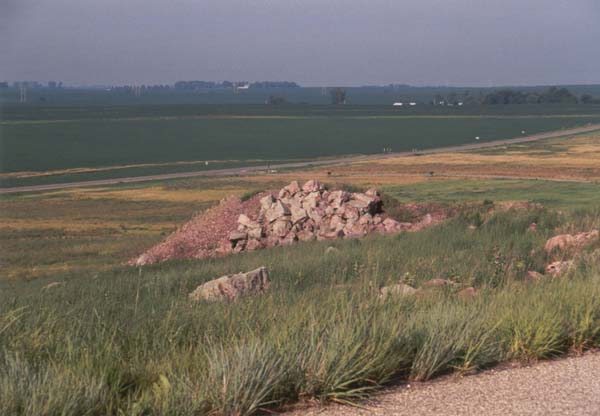
|
A jumble of rocks, and some dirt mounds greet us, as we begin the
climb up to Pipestone National Monument. These are remnants of small scale
quarry activities which began hundreds of years ago. |
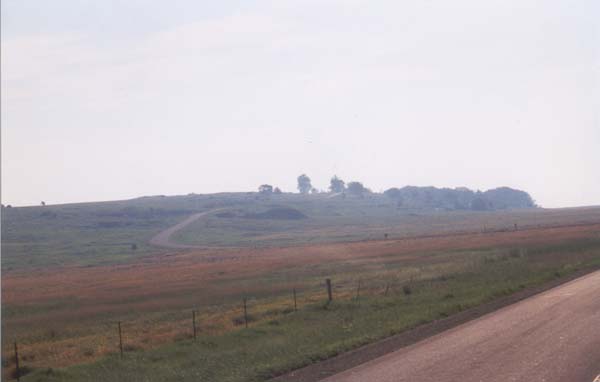
|
This little road winds around taking us up into the hills, and into
Pipestone proper. |

|
A look up the hill, with many loose rocks and boulders visible. |
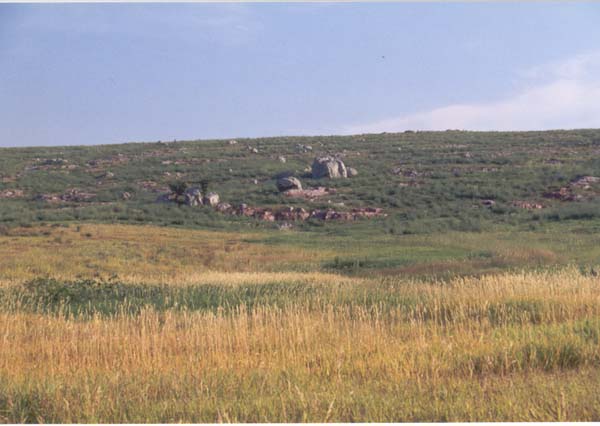
|
Some scattered outcroppings dot the hillside, though most of the
rock was taken from large bedded exposures. |
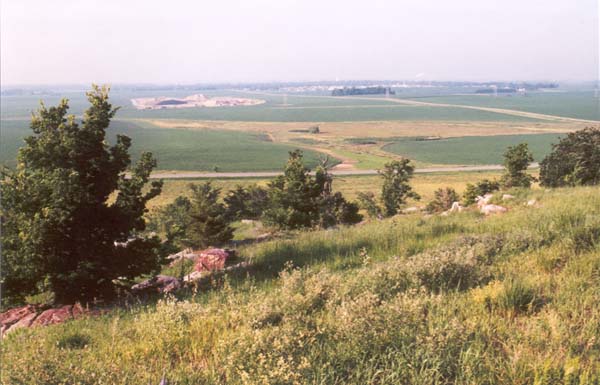
|
A look down the hill towards the road, and town. Some exposures
of pipestone can be seen. The topsoil is pretty thin over most of the hill,
making the rock easy to get at. |
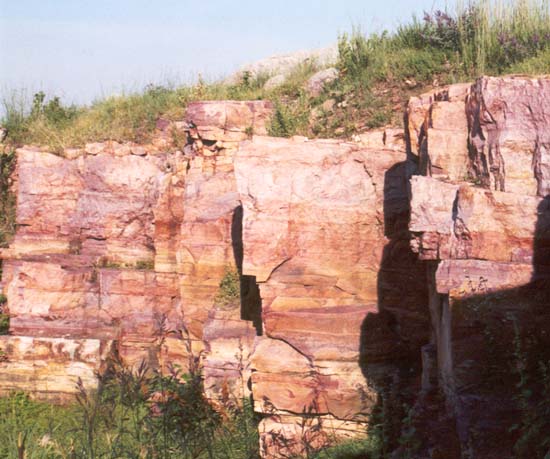
|
The namesake of the park, an outcropping of pipestone. The stone
was the preferred material for the pipes carved to serve in so many Indian
rituals. The stone was preferred both for it's color, and the relative ease
with which it could be worked. I would guess the stone to be quartzite, or
perhaps a form of chert, though I can not be certain. Legal restrictions
prevented me from obtaining a sample to look over more closely. |

|
What I believe to be a hawk, circles overhead. Actually, there were
several patrolling the fields around Pipestone. I am no ornithologist,
and would appreciate it if a more knowledgeable person could tell me what
kind of birds these were. |













